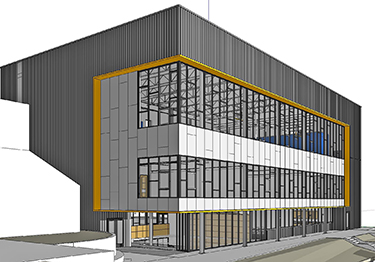SURVEY: SCHUCHART
Specialty: General construction
Management: George Schuchart, president; Bob Gregorini, vice president; Casey Schuchart, division manager
Founded: 1988
Headquarters: Seattle
2014 revenues: $60 million
Projected 2015 revenues: $80 million
Current projects: Eastside Prep School Science & Gym Building, Redmond; Chihuly Garden and Glass structure, Seattle; tenant improvements for Paladino & Co. in Seattle
George Schuchart, president of Schuchart, answered written questions from the DJC about his firm and trends and issues in the industry.
Q: What trends are you seeing?
A: Our industry is very active because of a seemingly insatiable appetite for high-quality assets in the Puget Sound marketplace. Leading indicators we track indicate demand will continue. These economic conditions create an environment where resources, such as labor, material and equipment, may more quickly reach capacity and lead to incremental project risk.
As a general contractor our primary project responsibility is managing risk. Our company monitors the marketplace closely and in doing so, we gain a deeper understanding of the current resources and the timing of the remaining capacity. We designate contingency plans to mitigate the impact of risk, such as changes in material availability, on a client’s project.
Q: What kinds of sustainable practices are you using?
A: In constructing the Bullitt Center — the world’s first living office building — our firm gained a deeper understanding of leading sustainability strategies and has applied those and other green strategies we developed to other projects.
Our approach to sustainability and how we do the work make up another box of tools we deploy to satisfy our clients’ desires. We find creative ways to build while limiting impacts to the environment, such as by assisting in the selection of toxic-free products and materials.
We inform clients about the costs and benefits of sustainable strategies so they can decide how they want to proceed. And we believe project teams are inclined to make smart decisions if they understand those costs and benefits.
Q: How has your company changed over the last five years?
A: Our company changed more in the past five years than any time in its 26-year existence. We are thrilled with the talent we have been able to attract. It has meant going places we haven’t been before compensation-wise, but we’ve learned that upping our game pays off handsomely.
Adding key positions within the organization also gave us a sophistication and discipline that we kick ourselves for not doing sooner.
One of our better decisions was committing to a full-time general superintendent. Prior to that, we placed the responsibility of safety and manpower onto one individual; now we have a full-time safety director and a full-time general superintendent. Our safety rating, or experience modification factor, determined by Labor & Industries is as low as it can be, and is largely owing to our stringent safety practices.
Also, formalizing a divisional structure within the company, and promoting key individuals to division management positions in the industrial, building and tenant improvement markets has given us the focus and accountability that was missing before.
Q: How does Seattle stack up to other markets?
A: I was a member of the downtown Seattle Rotary many years ago. I’ll never forget the large turnout to hear the French minister of economic development talk about opportunities in his country. He was amazed how anxious U.S. companies were to expand operations into France saying, “You don’t get it; the whole world wants get into the U.S.”
The point being that the best opportunities for American companies are right here at home.
That is how I feel about our Seattle market. We have strayed from home a couple of times, but always came back with our tail between our legs. I think the contractor that understands this best is Sellen; to my knowledge they only have the Seattle office. I’ll bet their local backlog is greater than the combined backlog of the next two largest contractors in town.
Q: Which of your services are in highest demand, and why?
A: Our company is experiencing relative balance across the three operating divisions — industrial, building and tenant improvement — which indicates that construction-related services are in demand from multiple sectors in our industry. Historically, our firm has seen strength in two of our divisions while the third lagged.
Our clients continue to want to engage our project teams early in the project delivery process; more and more of our clients understand the tremendous value added through early engagement. The demand for pre-construction services in the early engagement phases now seems to include three-dimensional modeling, sustainability analysis and real-time estimating; services which not too long ago seemed to be more the exception than the rule.
To read the original article, click HERE

